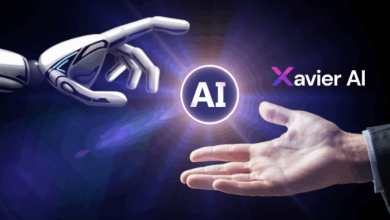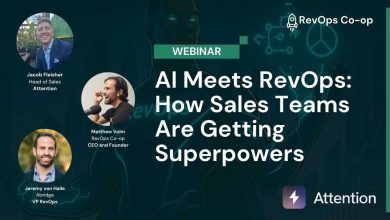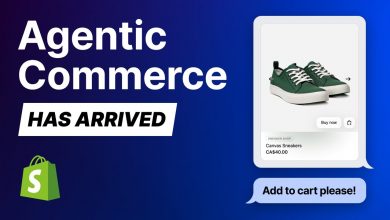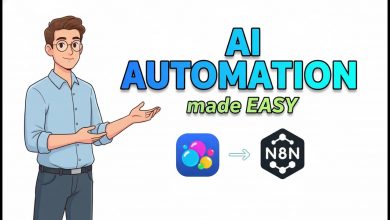AI Chatbots as a Service: Solutions to Deploy an AI Chatbot for Your Web Site for Non-Technical Users
Off-the-shelf chatbot services are designed to make chatbot creation accessible to anyone, regardless of technical expertise.
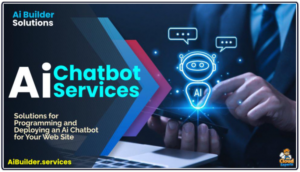 Organizations like Aberdeen City Council are integrating AI Chatbots into their web site to streamline the online citizen contact experience.
Organizations like Aberdeen City Council are integrating AI Chatbots into their web site to streamline the online citizen contact experience.
If you are seeking to replicate this same type of functionality there are two main options: Custom development and off-the-shelf services.
In the case of Aberdeen this is a custom development example. Platforms like Microsoft Azure offer a full suite of services for developing a plethora of AI services, such as chatbots, and the ability to integrate with the surrounding suite of enterprise applications and data is the primary reason for this approach.
Ai Chatbot as a Service
For smaller and less technical organizations an off-the-shelf service is ideal as all of this detail can be avoided, and instead it can be deployed in a plug-and-play manner. These are available via an ‘as a service’ model.
Off-the-shelf chatbot services are designed to make chatbot creation accessible to anyone, regardless of technical expertise, and several platforms stand out: ChatBot, HubSpot, Botpress, Chatling, and Botsonic. These platforms are designed to empower non-technical staff to build, customize, and maintain chatbots using intuitive, no-code interfaces
These platforms use intuitive, no-code interfaces that let users define how the chatbot interacts with customers, what it knows, and how it responds.
ChatBot.com
This platform offers a drag-and-drop builder that lets users create chatbots in minutes without coding. You can start with templates for scenarios like customer service or sales, then customize them via a visual editor. Non-technical users can train the chatbot by uploading a website URL, knowledge base link, or text files, and the platform builds a custom AI model.
The backend portal allows staff to fine-tune responses and add custom answers, with seamless integration into websites via a simple code snippet.
HubSpot Chatbot Builder
HubSpot’s free chatbot builder is ideal for businesses already using its CRM. Non-technical users can create chatbots using a visual editor and pre-built templates, customizing conversation flows to match their brand. The platform pulls data from your CRM to personalize responses, and the backend dashboard lets staff update FAQs or add new content without technical skills. It integrates easily with websites and platforms like Facebook Messenger, requiring no coding or complex CMS like WordPress.
Botpress
Botpress bridges the gap for non-technical users with its visual flow builder and built-in NLP engine. Users can design conversation flows via a drag-and-drop interface and train the chatbot with uploaded documents or website data. The backend portal is user-friendly, allowing staff to update the knowledge base or tweak responses. While it supports developer customization, non-technical users can fully manage it without coding, and it integrates with messaging platforms like Slack or Telegram.
Chatling
Chatling is a no-code platform where users can train a chatbot using website URLs, files (PDFs, text), or manual Q&A entries. Its intuitive dashboard lets non-technical staff update the knowledge base and fine-tune responses based on real user interactions. It supports over 85 languages and can be embedded on a website with a simple script, making it ideal for businesses seeking quick deployment without custom development.
Botsonic
Powered by GPT-4, Botsonic allows non-technical users to create chatbots by uploading data or entering a website URL. The platform’s visual builder simplifies conversation design, and its backend portal lets staff manage the knowledge base with ease. It integrates with websites and apps via an embedded script.
These platforms eliminate the need for custom development by providing all-in-one solutions hosted in the cloud. They handle the technical heavy lifting—AI processing, hosting, and security—while offering simple tools for customization and maintenance. For example, Chatling reports that it resolved 45% of customer queries for one business, freeing up staff time, while HubSpot’s CRM integration ensures responses are tailored to customer data.
How It Works in Practice
Imagine you run a small e-commerce business. Using a platform like ChatBot, you sign up, select a customer service template, and upload your product catalog and FAQs into the backend portal. In the visual builder, you drag and drop elements to create a flow where the chatbot greets users, offers a menu (“Shop Products,” “Track Order”), and responds with details from your catalog.
If a new product launches, your team logs into the portal, adds the product details, and the chatbot instantly incorporates them. The platform generates a code snippet you paste into your website’s HTML—no WordPress or Django required. Within hours, your chatbot is live, answering questions 24/7 and capturing leads.
